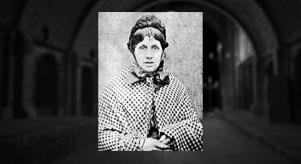
The tragic murder of Tia Rigg
In April of 2010, Manchester was rocked by the brutal murder of 12-year-old, Tia Rigg. Locals would be even more horrified when it was revealed who had killed the youngster and what his motivations were. Her shocking murder would raise many questions regarding child protection agencies in Britain and would ultimately lead to a serious case review.
Tia Rigg was a popular 12-year-old student at Albion High School in Cheetham Hill, Manchester, England. She would be described by her loved-ones as a happy girl who was strong-willed and free-spirited. She enjoyed watching football, especially Manchester United, and was a loving and compassionate big sister to her younger siblings. Tia lived at home with her single mother, Lynne Rigg, as well as her three younger siblings and her grandparents.
It was the 3rd of April 2010, when John Maden, Tia’s uncle, called up Lynne and asked if Tia could come to his home located in the Dudley Brew Estate to babysit his 10-year-old daughter. Lynne agreed and Tia was sent over to her uncle’s home, which was located around 100 yards away. Tia was excited to see her uncle and was hoping they would watch the Manchester United vs Chelsea football match that was scheduled for that afternoon.
Maden, however, had other plans for Tia. Unbeknownst to those who knew Maden, he had been harbouring sadistic fantasies. Before Maden invited his niece over that afternoon, he had studied a ‘how to kill’ guide and had extensively researched ways to drug people. At her uncle’s home, Tia would be subjected to a horrifying sexual assault, culminating in her murder.
At 3:45PM, Maden calmly called 999 and stated: ‘Hi, I would like to report a murder…’ He gave the 911 operator his name and address before saying: ‘My niece has been murdered by me. I have just finished killing her now.’ The 911 operator asked Maden why he had killed his niece to which he replied: ‘Because I felt like it,’ before hanging up.
When police officers arrived at the crime scene, Maden opened the front door and ushered them inside. They would describe Maden as ‘chillingly calm’ as he led them up the stairs and into a spare bedroom. On the bedroom floor was the lifeless body of Tia, surrounding in a puddle of her own blood. She was nude except for a pair of socks; it was evident that she was deceased. A guitar string was wrapped tightly around her neck and her hands had been crudely bound behind her back. Maden admitted to the police that he had raped and killed Tia but claimed that he heard voices – one of which was good and one of which was bad.
The autopsy would determine that Tia had been dead for less than an hour, meaning that she had been attacked almost as soon as she entered the home. The stab wounds to her stomach had caused severe internal injuries and several of these wounds had been inflicted while Tia was still alive. While Tia had suffered from severe blood loss, her ultimate cause of death would be strangulation via ligature.
Maden would be arrested at the scene while several neighbours and the media began to congregate outside the home. One neighbour, John Fisher, said: ‘Tia was smashing, but her uncle was odd. This is a rough estate and it’s not the sort of place to raise a child. There’s always police around here and there are lots of drugs' (The Times, 5 April, 2010 – ‘Uncle Arrested Over Stabbed Girl’s Death’).
Lynne would rush to the crime scene where she could be heard screaming ‘why?’ repeatedly before collapsing to the floor. ‘All murders are terrible but when it’s a 12-year-old girl, it’s just horrendous,’ said Detective Superintendent Mary Doyle, who was leading the murder investigation. (Daily Post, 5 April, 2010 – ‘Girl, 12, Had Been Stabbed and Strangled’).
On the 28th of April, hundreds of mourners packed into St. James’ Church in Cheetham Hill to pay their final respects to Tia. Instead of the traditional all-black, mourners wore pink, which was Tia’s favourite colour. Several in attendance also wore rings embossed with a heart. The funeral cortege was led by a horse-drawn hearse which was carrying Tia’s pink casket. The funeral service was held by Reverend Simon Cook who told the mourners: ‘Love is the reason why so many of you have come here today. It’s what we hold on to in our deepest moments. Death seems always to take us by surprise – but especially when it comes to someone as young as Tia (The Salford Advertiser, 29 April, 2019 – ‘Sad Farewell to Tragic Tia Rigg’).
Following the service, Tia was buried at Southern Cemetery where 12 balloons were release, one to symbolise each year of her life.
Shortly before he was scheduled to go to trial, John Maden would plead guilty to the rape and murder of Tia Rigg. During his sentencing hearing, details of Tia’s last terrifying moments on earth were read aloud to Manchester Crown Court. Maden would be sentenced to life imprisonment with the recommendation that he never be released. When handing down the sentence, Mr. Justice Keith said that the case was horrific and truly exceptional:
‘It’s inescapable that Tia Rigg died because you decided to realise your fantasies about torturing and killing a young child. The fact that you chose your 12-year-old niece, who had put her trust in you, makes what you did all the more unspeakable, as was the fact that all of this was planned by you and you lured her into your home by pretending you wanted her to babysit for you. It’s difficult to know how long Tia’s ordeal lasted. The terror, the unimaginable pain you inflicted on her, the indignities you subjected her… while still alive.’
Outside court, Lynne spoke with the media: ‘When this nightmare happened, it killed me inside. My heart has been broken and will never mend. All that is left is a big empty hole. For me, this nightmare will never end but now justice has been done, at least Tia can rest in peace.’
Alongside Lynne was Detective Chief Inspector Dave Warren, who added: ‘He’s refused to try and ease some of the pain by telling anyone why he did this and that has added to their upset. He will now have a long time to reflect on what he has done.’
After Tia’s murder, it would be revealed that she was well-known to child protection services and that she and her siblings had been placed on the Child Protection Register. In 2011, a serious case inquiry would be carried out to try and determine if Tia’s death could have been prevented. The findings of the inquiry would be highly critical of Salford’s child protection services and would essentially find that Tia had been let down by several child protection agencies, including Salford where she had previously lived.
The independent inquiry found that social workers had missed opportunities to help Tia but found that her murder could not have been ‘predicted or prevented’ because there was no previous evidence that Maden was a threat to her. The inquiry, however, did find that Tia had come into contact with social service agencies several times throughout her life and these agencies should have recognised that she was at risk of harm because of her unstable home environment.
The inquiry acknowledged that while these missed opportunities did not directly lead to Tia’s death, they had increased the risk of neglect that she had faced during her short life. They would find that Tia’s mother, Lynne, had a long history of drug abuse and that removing Tia and her siblings from her care ‘should have been very seriously considered’.
In 1998, child protection agencies had found that Tia was ‘likely to suffer neglect’. This would later be changed to ‘likely to suffer physical abuse’. In 2001, Tia had been removed from the child protection register and was not placed back on it until 2004. In 2008, Tia and her siblings were made the subject of child protection plans and they were placed in the care of extended family. In October of 2008, however, they were returned to their mother. The following May, it was decided by the Child Protection Review Conference that the child protection plans would be discontinued. The inequity after Tia’s murder found that this decision was ‘flawed’ and was based on inaccurate information regarding Tia’s mother’s progress.
‘No-one could have predicted what happened to her when she visited her uncle that day, but we know more could have been done during her childhood to support her in coping with her unstable home life,’ said Councillor John Merry. ‘However, even if this child has been removed from her home, she would not have been prevented from having contact with her family as there was no indication she was at risk from her uncle and therefore no reason to stop her having access to him and other members of the extended family. Removing her from her home would therefore not have prevented her death.’










